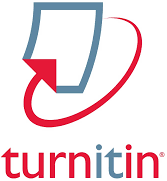Characterization of Microplastic Contamination of Whiteleg Shrimp (Litopenaeus vannamei) Cultivation in North Lombok, Indonesia
DOI:
https://doi.org/10.29303/jfh.v4i4.5975Keywords:
Aquaculture, Contamination, Microplastic, Whiteleg ShrimpAbstract
This study investigates microplastic contamination in whiteleg shrimp (Litopenaeus vannamei) cultivation systems, focusing on water, feed, and shrimp health. Microplastics, which pose significant threats to aquaculture, are often ingested by shrimp, potentially causing physiological damage and reducing product quality. The research was conducted from June to September 2024 at PT—X in North Lombok Regency. Samples of water, shrimp organs (intestines, stomach, and gills), and feed (pellets and crumbles) were analyzed for microplastic contamination. Results revealed a high presence of microplastic fragments in both shrimp and feed, with a significant reduction in microplastic particles after water filtration treatment. Specifically, the water reservoir contained 71 microplastic particles before treatment, with fragments being the most prevalent, and decreased to 8 particles post-treatment. The pelleted feed showed 102 microplastic particles, with fragments comprising 90 of them. Similarly, crumble feed contained 49 microplastic particles, predominantly fragments. The findings emphasize the significant role of microplastic pollution from the surrounding environment and the feed production process in shrimp farming. This study provides essential insights into the sources and impact of microplastics on shrimp health and the quality of aquaculture products, advocating for improved management practices and environmental awareness to mitigate contamination risks.
Downloads
Published
Issue
Section
License
1. The copyright of this journal belongs to the Editorial Board, based on the author's consent, while the moral rights of the publication belong to the author(s).
2. The formal legal aspect of journal accessibility refers to the same Creative Common Attribution + Noncommercial + ShareAlike (CC BY-NC-SA), implying that publication can be used for non-commercial purposes in its original form.
3. Every publication (printed/electronic) is open access for educational, research and library purposes. In addition to the objectives stated above, the editorial board is not responsible for copyright infringement















